Charles M. Kozierok The TCP-IP Guide
Подождите немного. Документ загружается.

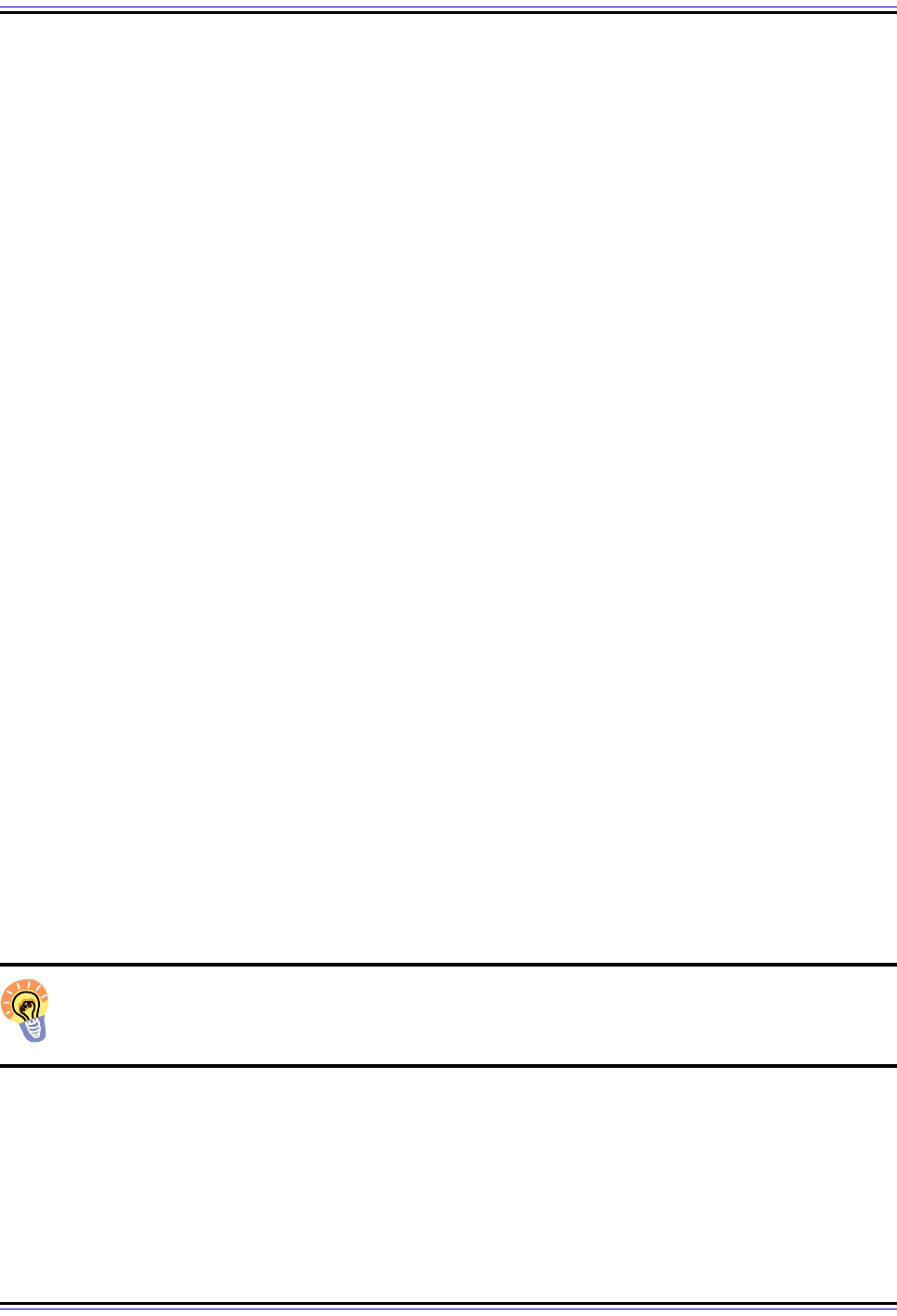
The TCP/IP Guide - Version 3.0 (Contents) ` 371 _ © 2001-2005 Charles M. Kozierok. All Rights Reserved.
Subnet Identifiers
Once we decided how many subnets we are going to have, we need to identify the subnets
and determine what the addresses are for the subnets. Let's start by looking at the subnet
identifier. This is just the subnet ID of any of the subnets in our network. Subnets are
numbered starting with 0 and increasing up to one less than the maximum number of
subnets, which is a function of how many bits are in the subnet ID. (If the all-zero and all-
one subnet IDs are excluded as specified in RFC 950 then the first subnet identifier is one).
Of course, we may not need all of the subnets that can theoretically be defined. For
example, if we have 20 subnets, we need 5 bits for the subnet identifier, which allows a
theoretical maximum of 32 subnets. We would use only subnets 0 to 19; 20 through 31
would be reserved for future use. These subnets could be expressed either in decimal form
(0, 1, 2 … up to 19) or in binary (00000, 00001, 00010 … up to 10011).
Subnet Addresses
For each subnet we can also determine the subnet address. To do this we start with the IP
address for the overall network, which recall has all zeroes in the “classful” host ID field (8
bits, 16 bits or 24 bits). We then insert the subnet identifier for a particular subnet into the
designated subnet bits.
As an example, let’s refer back to the subnetting of a Class B network, 154.71.0.0, shown in
Figure 66. We used five subnet ID bits there. We start with the following network IP
address, with the subnet ID bits highlighted:
10011010 01000111 00000000 00000000
To find the address of say, subnet #11, we would substitute “01011” for these bits, leaving
the host ID bits zero:
10011010 01000111 01011000 00000000
We can then convert this from binary form to dotted decimal, resulting in a subnet address
of 154.71.88.0.
Key Concept: The subnet identifier of a subnet is just its subnet ID. The subnet
address of a subnet is determined by substituting its subnet ID into the subnet bits of
the overall network address.
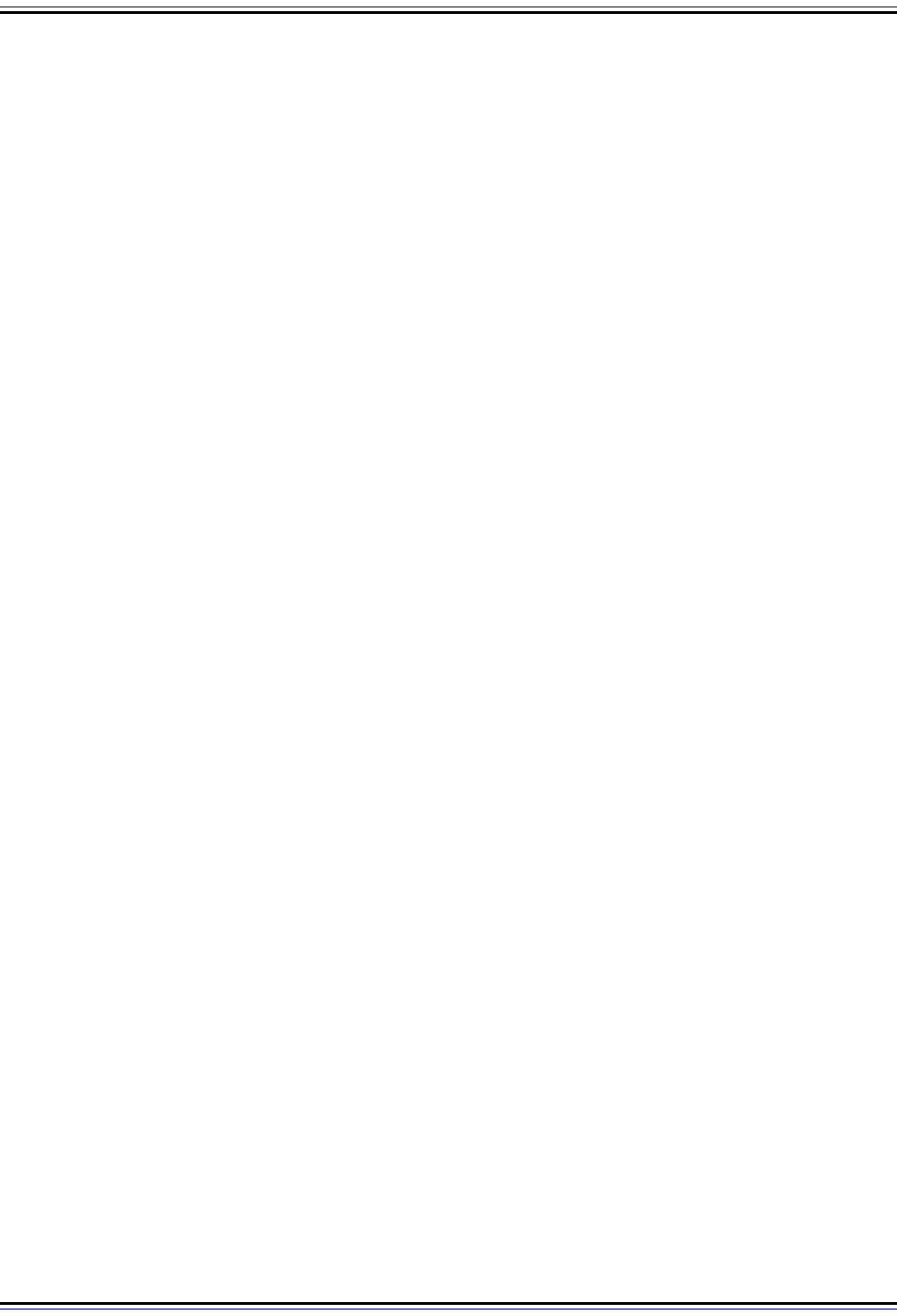
The TCP/IP Guide - Version 3.0 (Contents) ` 372 _ © 2001-2005 Charles M. Kozierok. All Rights Reserved.
Subnet Address Formulas
Notice when looking at subnet addressing that when you substitute subnet IDs in sequence,
a pattern becomes immediately visible. The first subnet address is always the address of
the overall network, because the subnet ID is all zeroes. Then, the second subnet address
in decimal form is found by adding a specific multiple of two to one of the octets. The third
address is then found by adding this same number to the second address, and so on.
In fact, I realized that the decimal value of each subnet address can be expressed as a
formula, based on the class of the original network and the number of bits being used for
the subnet ID. For example, consider a Class B network with overall address of “x.y.0.0” (it
doesn't matter what “x” and “y” are for our purposes). Now, say we are using two bits for the
subnet ID. We have four subnet addresses here:
1. The address of subnet #0 will be the same as the network address: x.y.0.0.
2. The address of subnet #1 will be found by substituting “01” for the first two bits of the
third octet. This yields an address of “x.y.01000000.0000000”, or “x.y.64.0” in straight
decimal.
3. Subnet #2's address is found by substituting “10” for the subnet ID bits, so it is
“x.y.10000000.0000000”, or “x.y.128.0” in straight decimal.
4. Subnet #3's address will be “x.y.192.0”.
So, the formula in this case for subnet #N is “x.y.N*64.0”. If we use five bits for a subnet, the
formula is “x.y.N*8.0”; as we saw above, the subnet address for subnet #11 in network
154.71.0.0 is 154.71.88.0. I have shown the formulas for all of the combinations of subnet
ID and host ID size in the subnetting summary tables. These formulas may seem a bit
confusing at first, but they can be a real time-saver once you become more familiar with
subnetting.
Host Addresses Within Each Subnet
Once we know the subnet address for a particular subnet, assigning IP addresses is easy.
We just plug in values into the remaining host ID bits. Of course, we skip the all-zeroes
value, so the first host in the subnet has all zeroes for the host ID except for a one in the
right-most bit position. Then the next host has all zeroes except for “10” at the end (two in
decimal). We can do this all the way up to one less than the all-ones value. Again, we then
convert each IP address from binary to decimal.
Some more examples would definitely help you understand much better how these
addresses are determined. This requires us to deal with a large number of nitty-gritty details
and lots of binary numbers. You can find exactly these details in the section on practical
subnetting.
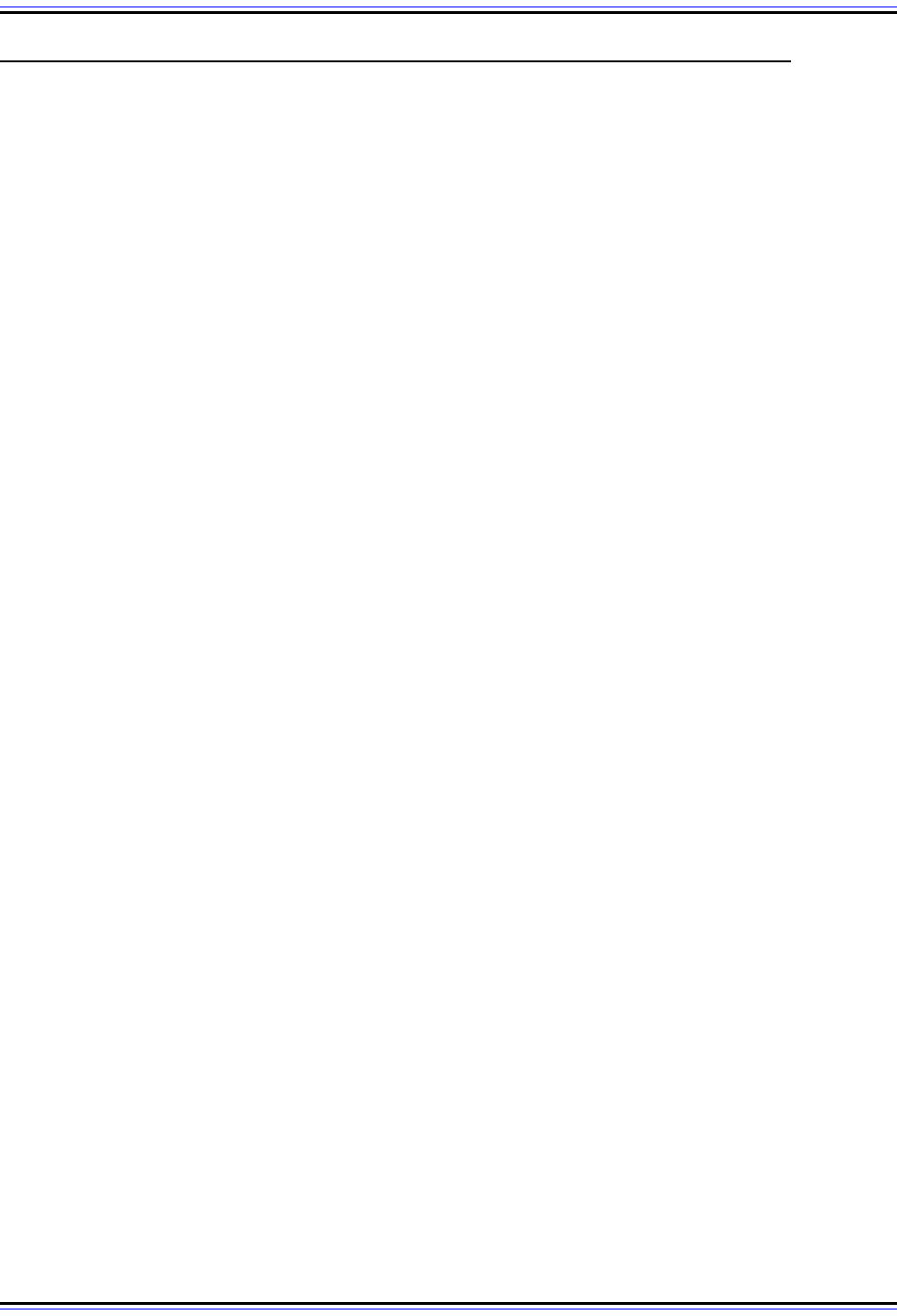
The TCP/IP Guide - Version 3.0 (Contents) ` 373 _ © 2001-2005 Charles M. Kozierok. All Rights Reserved.
IP Subnetting Summary Tables For Class A, Class B and Class C Networks
Since there are only a few options for how to subnet each of Class A, Class B and Class C
networks, I have listed the options for each class in three summary tables below: Table 53,
Table 54 and Table 55. These tables can help you quickly decide how many bits to use for
subnet ID and host ID, and then what the subnet mask is for their selection. They also
summarize nicely what we've discussed in this section.
Each row of each table shows one possible subnetting option for that class, including the
number of bits for each of the subnet ID and host ID, and the number of subnets and hosts
based on the number of bits. I then show the subnet mask in binary and decimal form, as
well as in CIDR notation. Finally, I include the formula for calculating the addresses for each
subnet under each of the options.
Notes on the Three Subnetting Summary Tables
A few additional explanatory notes are in order regarding these tables:
☯ The values for the number of subnets per network assume that the all-zeroes and all-
ones subnets are allowed. If not, you must subtract 2 from those figures; this also
means that the option using only one bit for the subnet ID becomes invalid, and the
subnet address formulas no longer work as shown.
☯ The number of hosts per subnet does exclude the all-zeroes and all-ones cases, so it
is two to the power of the number of host ID bits, less two.
☯ The first row of each table shows the “default” case where the number of subnet bits is
zero, and thus the subnet mask is the default subnet mask for the class.
☯ In the subnet mask for all options but the default, I have highlighted the portion of the
subnet mask corresponding to the subnet ID, for clarity. This has been done for each
individual bit of the binary mask, and for each octet in the dotted decimal represen-
tation of the mask where part of the subnet ID is found.
☯ You will see that not all of the divisions make a great deal of sense in the real world…
though you might be surprised. For example, at first glance it seems silly to think that
we might want to assign 14 bits of a Class B host ID to the subnet ID and leave 2 bits
for the host ID—what sort of real network has 16,384 subnets with 2 hosts on each?
Yet some larger Internet service companies may indeed require thousands of tiny
subnets when setting up connections between routers, or between their core network
and their customers.
☯ The subnet address formulas in the last column of each table show the address for
subnet #N (numbering from zero up to one less than the maximum number of
subnets).See the end of step #4 in the step-by-step subnetting section for a full expla-
nation of how these formulas work.
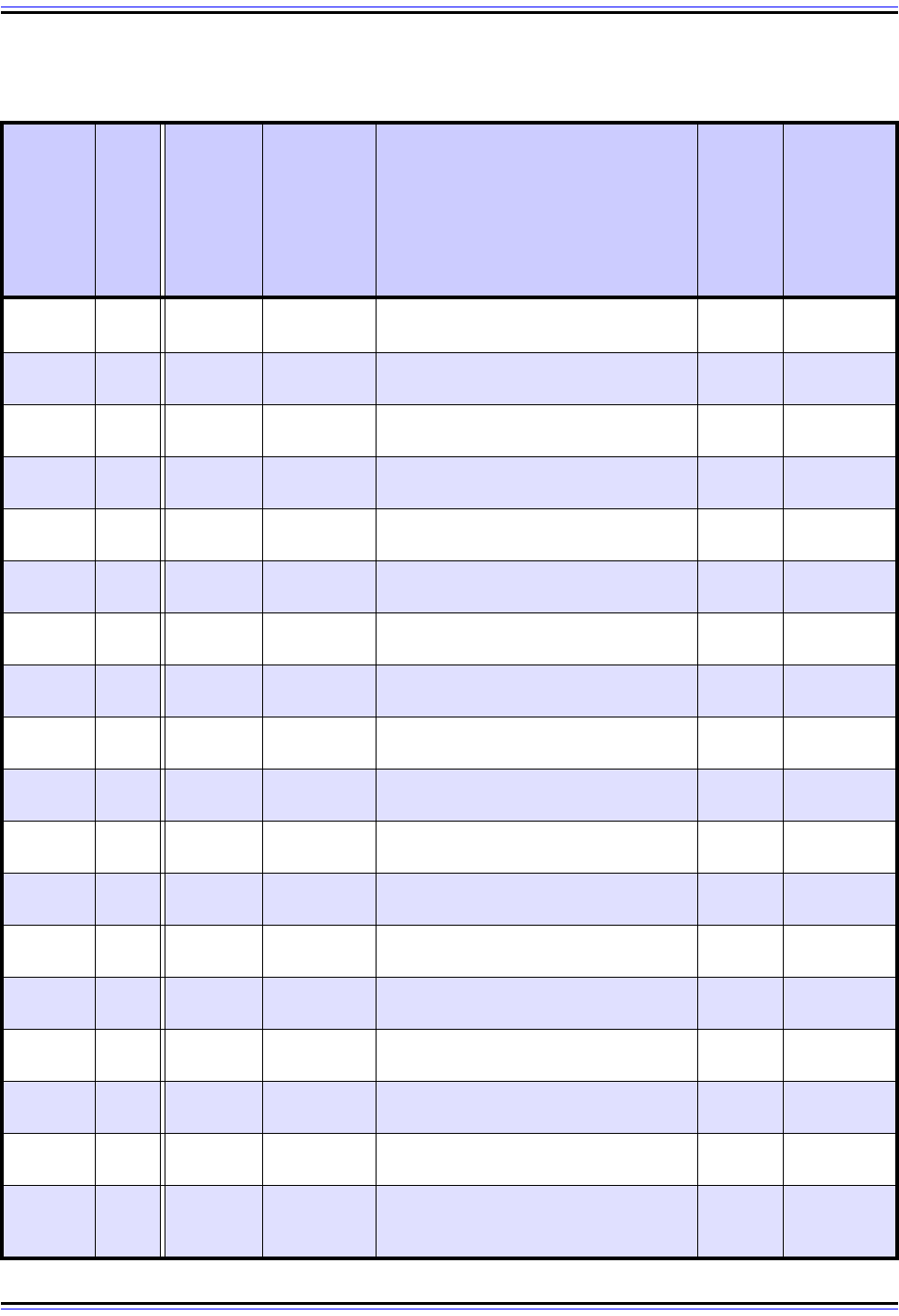
The TCP/IP Guide - Version 3.0 (Contents) ` 374 _ © 2001-2005 Charles M. Kozierok. All Rights Reserved.
Class A
Table 53: Subnetting Summary Table For Class A Networks (Page 1 of 2)
# of
Subnet
ID Bit
# of
Host
ID
Bits
# of
Subnets
Per
Network
# of
Hosts Per
Subnet
Subnet Mask
(Binary / Dotted Decimal)
Subnet
Mask
(Slash/
CIDR
Nota-
tion)
Subnet
Address
#N
Formula
(N=0, 1, …
# of
Subnets-1)
0
(Default)
24 1 16,277,214
11111111.00000000.0000000.00000000
255.0.0.0
/8
—
1 23 2 8,388,606
11111111.10000000.0000000.00000000
255.128.0.0
/9
x.N*128.0.0
222 4 4,194,302
11111111.11000000.0000000.00000000
255.192.0.0
/10
x.N*64.0.0
3 21 8 2,097,150
11111111.11100000.00000000.00000000
255.224.0.0
/11
x.N*32.0.0
42016 1,048,574
11111111.11110000.00000000.00000000
255.240.0.0
/12
x.N*16.0.0
5 19 32 524,286
11111111.11111000.00000000.00000000
255.248.0.0
/13
x.N*8.0.0
61864 262,142
11111111.11111100.00000000.00000000
255.252.0.0
/14
x.N*4.0.0
7 17 128 131,070
11111111.11111110.00000000.00000000
255.254.0.0
/15
x.N*2.0.0
816256 65,534
11111111.11111111.00000000.00000000
255.255.0.0
/16
x.N.0.0
9 15 512 32,766
11111111.11111111.10000000.00000000
255.255.128.0
/17
x.N/2.
(N%2)*128.0
10 14 1,024 16,382
11111111.11111111.11000000.00000000
255.255.192.0
/18
x.N/4.
(N%4)*64.0
11 13 2,048 8,190
11111111.11111111.11100000.00000000
255.255.224.0
/19
x.N/8.
(N%8)*32.0
12 12 4,096 4,094
11111111.11111111.11110000.00000000
255.255.240.0
/20
x.N/16.
(N%16)*16.0
13 11 8,192 2,046
11111111.11111111.11111000.00000000
255.255.248.0
/21
x.N/32.
(N%32)*8.0
14 10 16,384 1,022
11111111.11111111.11111100.00000000
255.255.252.0
/22
x.N/64.
(N%64)*4.0
15 9 32,768 510
11111111.11111111.11111110.00000000
255.255.254.0
/23
x.N/128.
(N%128)*2.0
16 8 65,536 254
11111111.11111111.11111111.00000000
255.255.255.0
/24
x.N/256.
N%256.0
17 7 131,072 126
11111111.11111111.11111111.10000000
255.255.255.128
/25
x.N/512.
(N/2)%256.
(N%2)*128
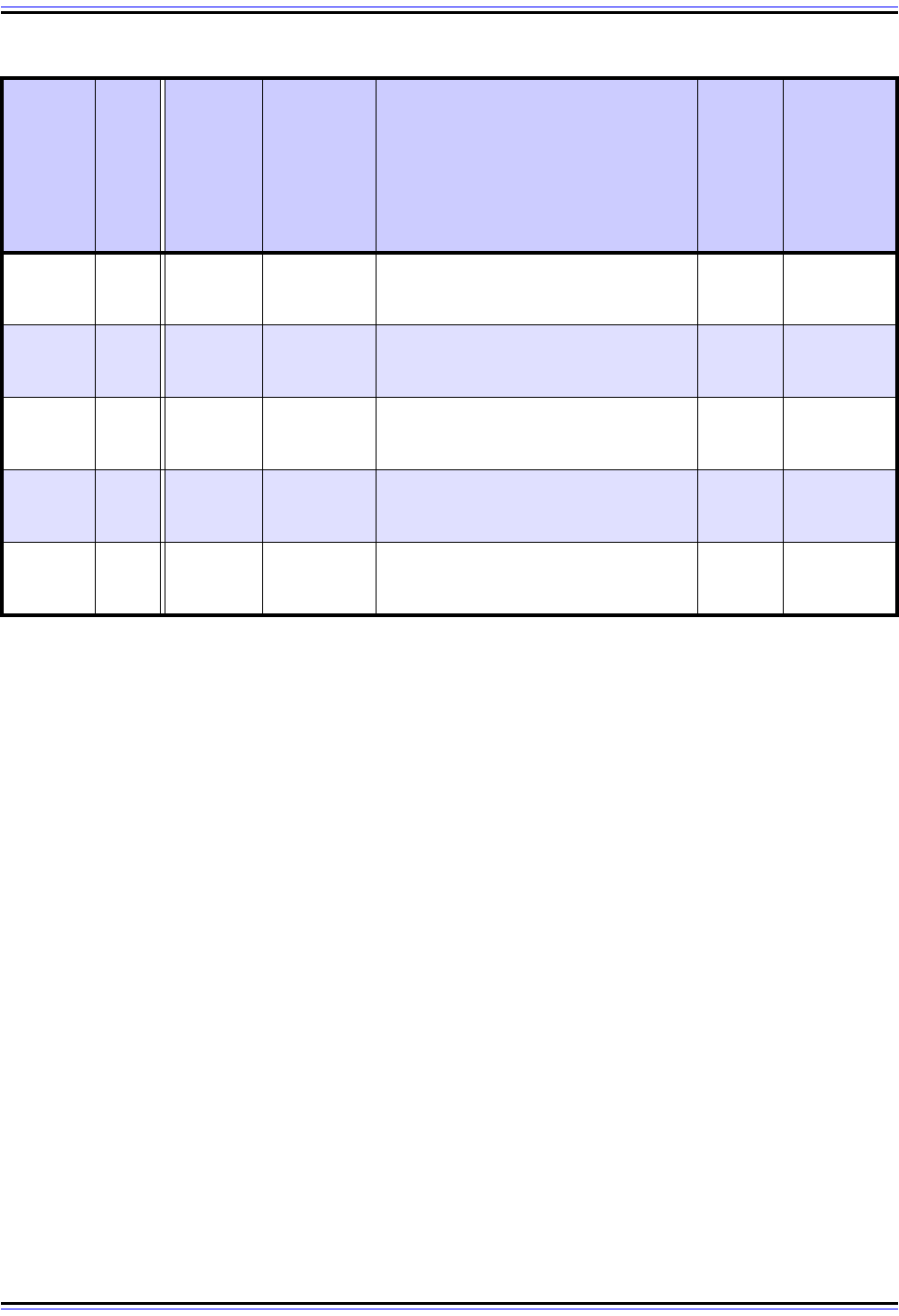
The TCP/IP Guide - Version 3.0 (Contents) ` 375 _ © 2001-2005 Charles M. Kozierok. All Rights Reserved.
18 6 262,144 62
11111111.11111111.11111111.11000000
255.255.255.192
/26
x.N/1024.
(N/4)%256.
(N%4)*64
19 5 524,288 30
11111111.11111111.11111111.11100000
255.255.255.224
/27
x.N/2048.
(N/8)%256.
(N%8)*32
20 4 1,048,576 14
11111111.11111111.11111111.11110000
255.255.255.240
/28
x.N/4096.
(N/16)%256.
(N%16)*16
21 3 2,097,152 6
11111111.11111111.11111111.11111000
255.255.255.248
/29
x.N/8192.
(N/32)%256.
(N%32)*8
22 2 4,194,304 2
11111111.11111111.11111111.11111100
255.255.255.252
/30
x.N/16384.
(N/64)%256.
(N%64)*4
Table 53: Subnetting Summary Table For Class A Networks (Page 2 of 2)
# of
Subnet
ID Bit
# of
Host
ID
Bits
# of
Subnets
Per
Network
# of
Hosts Per
Subnet
Subnet Mask
(Binary / Dotted Decimal)
Subnet
Mask
(Slash/
CIDR
Nota-
tion)
Subnet
Address
#N
Formula
(N=0, 1, …
# of
Subnets-1)
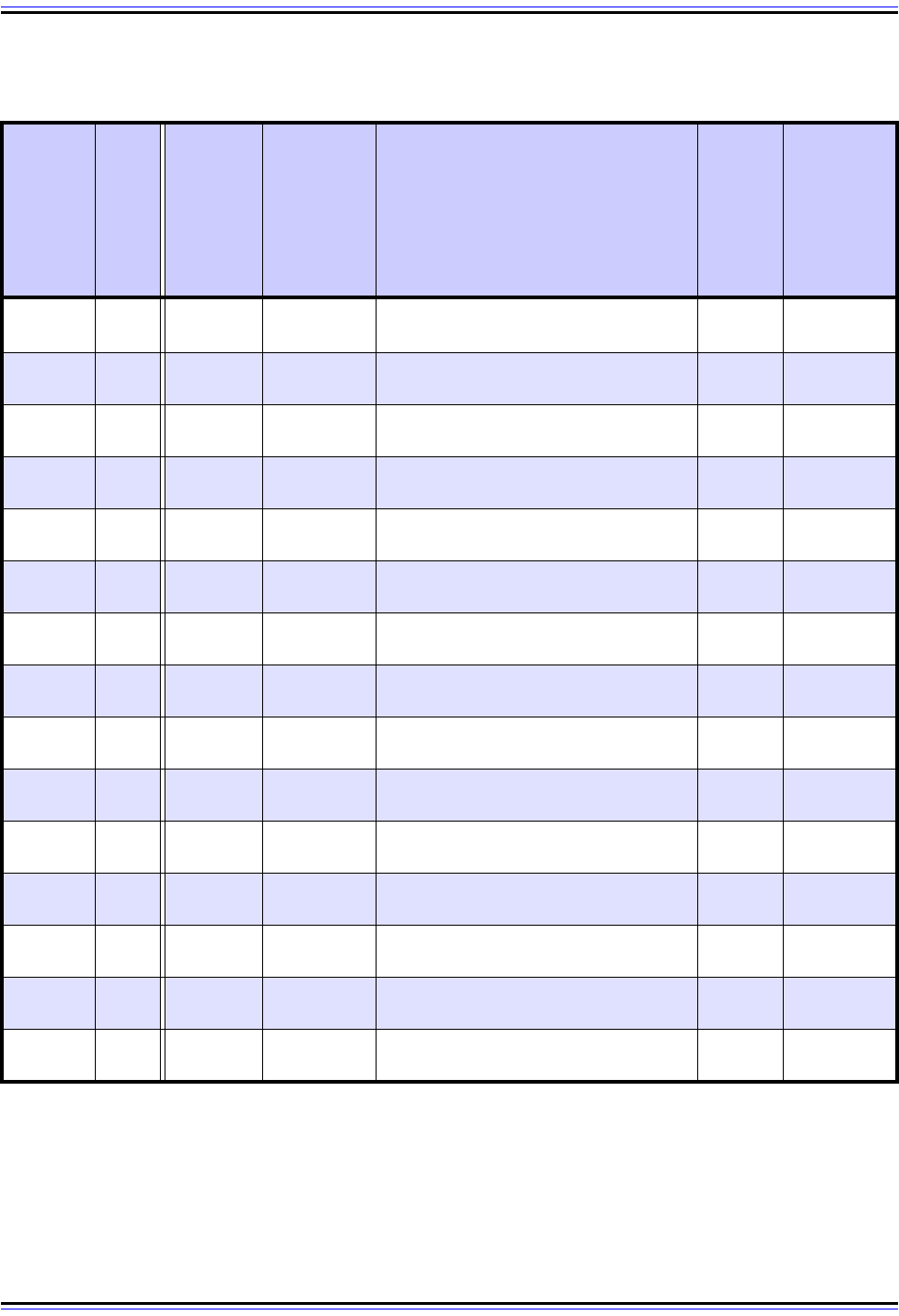
The TCP/IP Guide - Version 3.0 (Contents) ` 376 _ © 2001-2005 Charles M. Kozierok. All Rights Reserved.
Class B
Table 54: Subnetting Summary Table For Class B Networks
# of
Subnet
ID Bit
# of
Host
ID
Bits
# of
Subnets
Per
Network
# of
Hosts Per
Subnet
Subnet Mask
(Binary / Dotted Decimal)
Subnet
Mask
(Slash/
CIDR
Nota-
tion)
Subnet
Address
#N
Formula
(N=0, 1, …
# of
Subnets-1)
0
(Default)
16 1 65,534
11111111.11111111.00000000.00000000
255.255.0.0
/16
--
1 15 2 32,766
11111111.11111111.10000000.00000000
255.255.128.0
/17
x.y.N*128.0
214 4 16,382
11111111.11111111.11000000.00000000
255.255.192.0
/18
x.y.N*64.0
3 13 8 8,190
11111111.11111111.11100000.00000000
255.255.224.0
/19
x.y.N*32.0
41216 4,094
11111111.11111111.11110000.00000000
255.255.240.0
/20
x.y.N*16.0
5 11 32 2,046
11111111.11111111.11111000.00000000
255.255.248.0
/21
x.y.N*8.0
61064 1,022
11111111.11111111.11111100.00000000
255.255.252.0
/22
x.y.N*4.0
7 9 128 510
11111111.11111111.11111110.00000000
255.255.254.0
/23
x.y.N*2.0
88256 254
11111111.11111111.11111111.00000000
255.255.255.0
/24
x.y.N.0
9 7 512 126
11111111.11111111.11111111.10000000
255.255.255.128
/25
x.y.N/2.
(N%2)*128
10 6 1,024 62
11111111.11111111.11111111.11000000
255.255.255.192
/26
x.y.N/4.
(N%4)*64
11 5 2,048 30
11111111.11111111.11111111.11100000
255.255.255.224
/27
x.x.N/8.
(N%8)*32
12 4 4,096 14
11111111.11111111.11111111.11110000
255.255.255.240
/28
x.y.N/16.
(N%16)*16
13 3 8,192 6
11111111.11111111.11111111.11111000
255.255.255.248
/29
x.y.N/32.
(N%32)*8
14 2 16,384 2
11111111.11111111.11111111.11111100
255.255.255.252
/30
x.y.N/64.
(N%64)*4
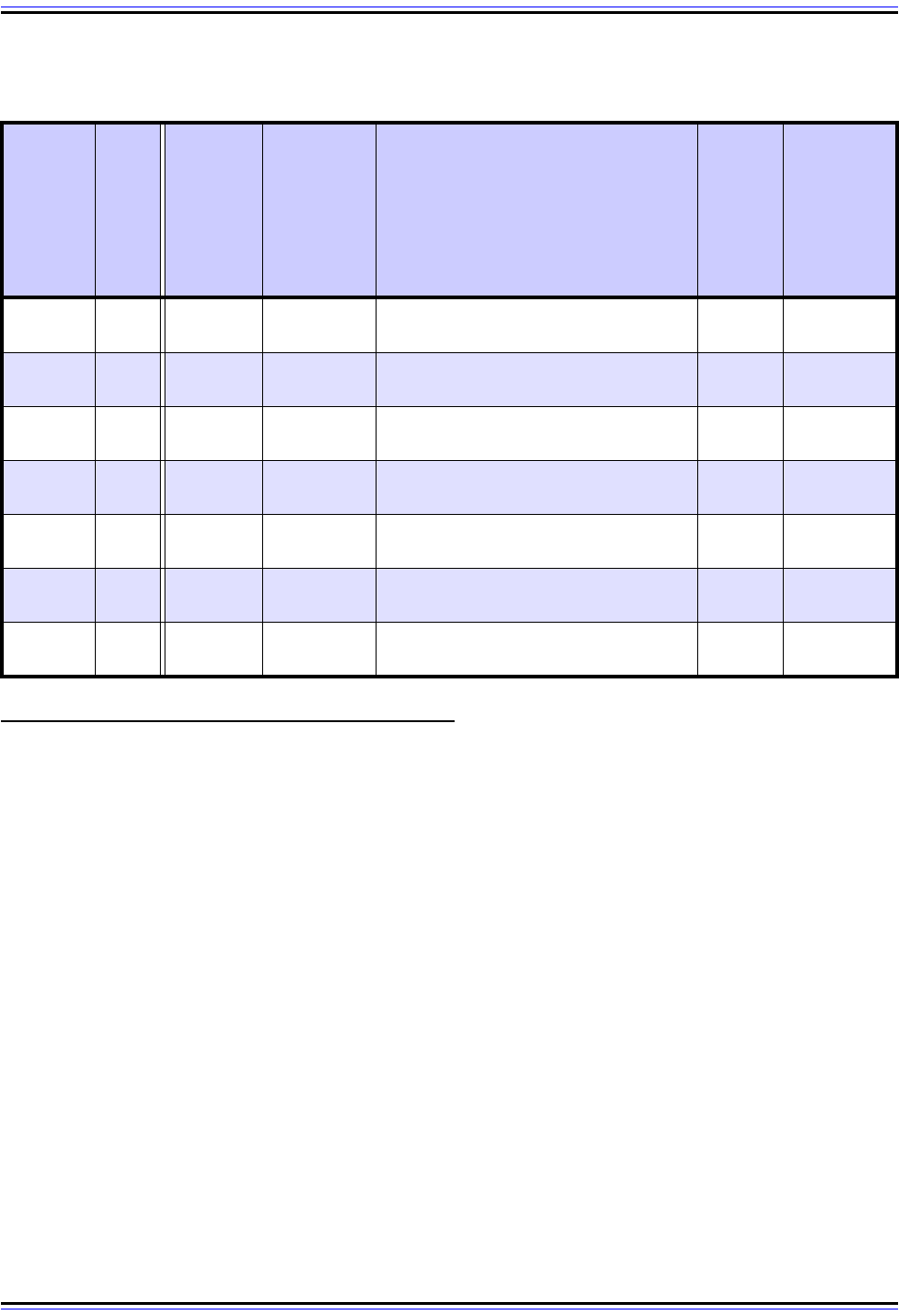
The TCP/IP Guide - Version 3.0 (Contents) ` 377 _ © 2001-2005 Charles M. Kozierok. All Rights Reserved.
Class C
IP Variable Length Subnet Masking (VLSM)
Conventional Subnet masking replaces the two-level IP addressing scheme with a more
flexible three-level method. Since it lets network administrators assign IP addresses to
hosts based on how they are connected in physical networks, subnetting is a real break-
through for those maintaining large IP networks. It has its own weaknesses though, and still
has room for improvement. The main weakness of conventional subnetting is in fact that the
subnet ID represents only one additional hierarchical level in how IP addresses are inter-
preted and used for routing.
The Problem With Single-Level Subnetting
It may seem “greedy” to look at subnetting and say “what, only one additional level”? ☺
However, in large networks, the need to divide our entire network into only one level of
subnetworks doesn't represent the best use of our IP address block. Furthermore, we have
already seen that since the subnet ID is the same length throughout the network, we can
have problems if we have subnetworks with very different numbers of hosts on them—the
subnet ID must be chosen based on whichever subnet has the greatest number of hosts,
even if most of subnets have far fewer. This is inefficient even in small networks, and can
result in the need to use extra addressing blocks while wasting many of the addresses in
each block.
Table 55: Subnetting Summary Table For Class C Networks
# of
Subnet
ID Bit
# of
Host
ID
Bits
# of
Subnets
Per
Network
# of
Hosts Per
Subnet
Subnet Mask
(Binary / Dotted Decimal)
Subnet
Mask
(Slash/
CIDR
Nota-
tion)
Subnet
Address
#N
Formula
(N=0, 1, …
# of
Subnets-1)
0
(Default)
8 1254
11111111.11111111.11111111.00000000
255.255.255.0
/24
—
1 7 2 126
11111111.11111111.11111111.10000000
255.255.255.128
/25
x.y.z.N*128
26 462
11111111.11111111.11111111.11000000
255.255.255.192
/26
x.y.z.N*64
3 5 8 30
11111111.11111111.11111111.11100000
255.255.255.224
/27
x.y.z.N*32
4416 14
11111111.11111111.11111111.11110000
255.255.255.240
/28
x.y.z.N*16
5 3 32 6
11111111.11111111.11111111.11111000
255.255.255.248
/29
x.y.z.N*8
6264 2
11111111.11111111.11111111.11111100
255.255.255.252
/30
x.y.z.N*4
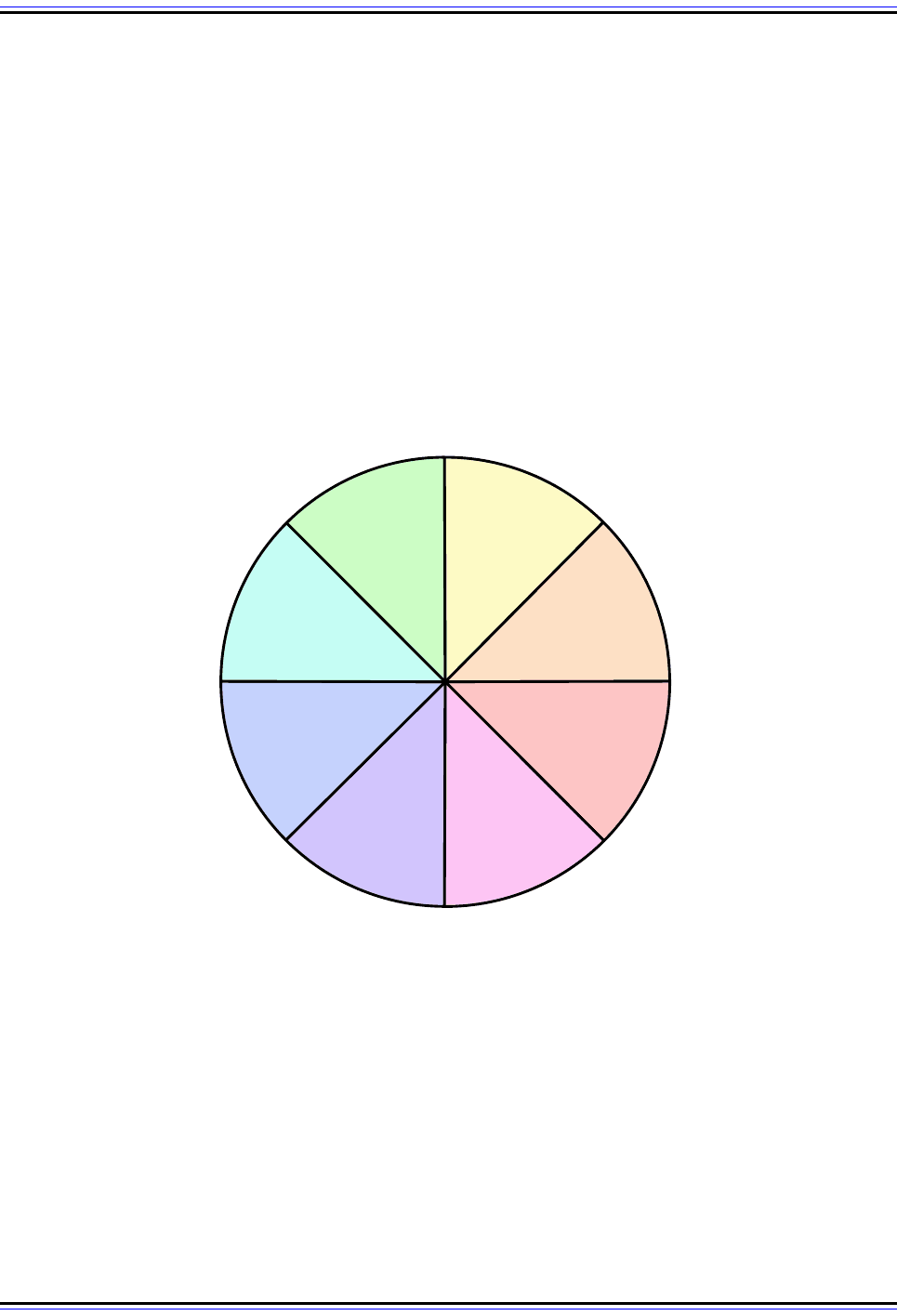
The TCP/IP Guide - Version 3.0 (Contents) ` 378 _ © 2001-2005 Charles M. Kozierok. All Rights Reserved.
For example, consider a relatively small company with a Class C network, 201.45.222.0/24.
They have six subnetworks in their network. The first four subnets (S1, S2, S3 and S4) are
relatively small, containing only 10 hosts each. However, one of them (S5) is for their
production floor and has 50 hosts, and the last (S6) is their development and engineering
group, which has 100 hosts.
The total number of hosts needed is thus 196. Without subnetting, we have enough hosts in
our Class C network to handle them all. However, when we try to subnet, we have a big
problem. In order to have six subnets we need to use 3 bits for the subnet ID. This leaves
only 5 bits for the host ID, which means every subnet has the identical capacity of 30 hosts,
as shown in Figure 70. This is enough for the smaller subnets but not enough for the larger
ones. The only solution with conventional subnetting, other than shuffling the physical
subnets, is to get another Class C block for the two big subnets and use the original for the
four small ones. But this is expensive, and means wasting hundreds of IP addresses!
The Solution: Variable Length Subnet Masking
The solution to this situation is an enhancement to the basic subnet addressing scheme
called Variable Length Subnet Masking (VLSM). VLSM seems complicated at first, but is
easy to comprehend if you understand basic subnetting. The idea is that you subnet the
network, and then subnet the subnets just the way you originally subnetted the network. In
Figure 70: Class C (/24) Network Split Into Eight Conventional Subnets
With traditional subnetting, all subnets must be the same size, which creates problems when there are some
subnets that are much larger than others. Contrast to Figure 71.
Class C (/24) Network (254 Hosts)
/27 Network
30 Hosts
/27 Network
30 Hosts
/27 Network
30 Hosts
/27 Network
30 Hosts
/27 Net-
work
30 Hosts
/27 Net-
work
30 Hosts
/27 Net-
work
30 Hosts
/27 Net-
work
30 Hosts
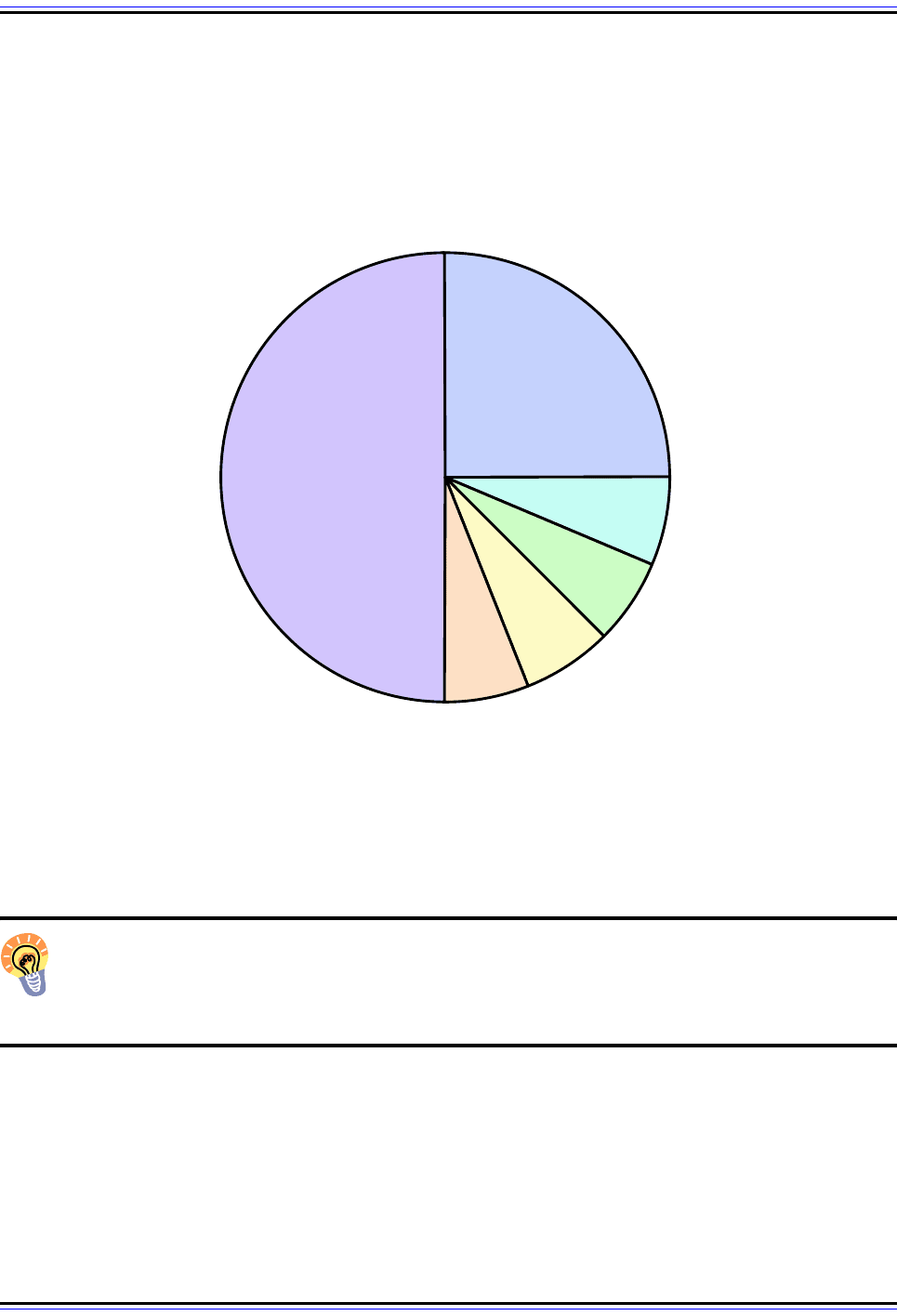
The TCP/IP Guide - Version 3.0 (Contents) ` 379 _ © 2001-2005 Charles M. Kozierok. All Rights Reserved.
fact, you can do this multiple times, creating subnets of subnets of subnets, as many times
as you need (subject to how many bits you have in the host ID of your address block). It is
possible to choose to apply this multiple-level splitting to only some of the subnets, allowing
you to selectively cut the "IP address pie" so that some of the slices are bigger than others.
This means that our example company could create six subnets to match the needs of its
networks, as shown in Figure 71.
Key Concept: Variable Length Subnet Masking (VLSM) is a technique where
subnetting is performed multiple times in iteration, to allow a network to be divided
into a hierarchy of subnetworks that vary in size. This allows an organization to much
better match the size of its subnets to the requirements of its networks.
An Example: Multiple-Level Subnetting Using VLSM
VLSM subnetting is done the same way as regular subnetting; it is just more complex
because of the extra levels of subnetting hierarchy. You do an initial subnetting of the
network into large subnets, and then further break down one or more of the subnets as
required. You add bits to the subnet mask for each of the "sub-subnets" and "sub-sub-
Figure 71: Class C (/24) Network Split Using Variable Length Subnet Masking (VLSM)
Using VLSM, an organization can divide its IP network multiple times, to create subnets that much better
match the size requirements of its physical networks. Contrast to Figure 70.
/25 Network
126 Hosts
/26 Network
62 Hosts
/28 Netw ork
14 Hosts
/28 Netw ork
14 Hosts
/28 Net-
work
14 Hosts
/28 Net-
work
14 Hosts
Class C (/24) Network (254 Hosts)
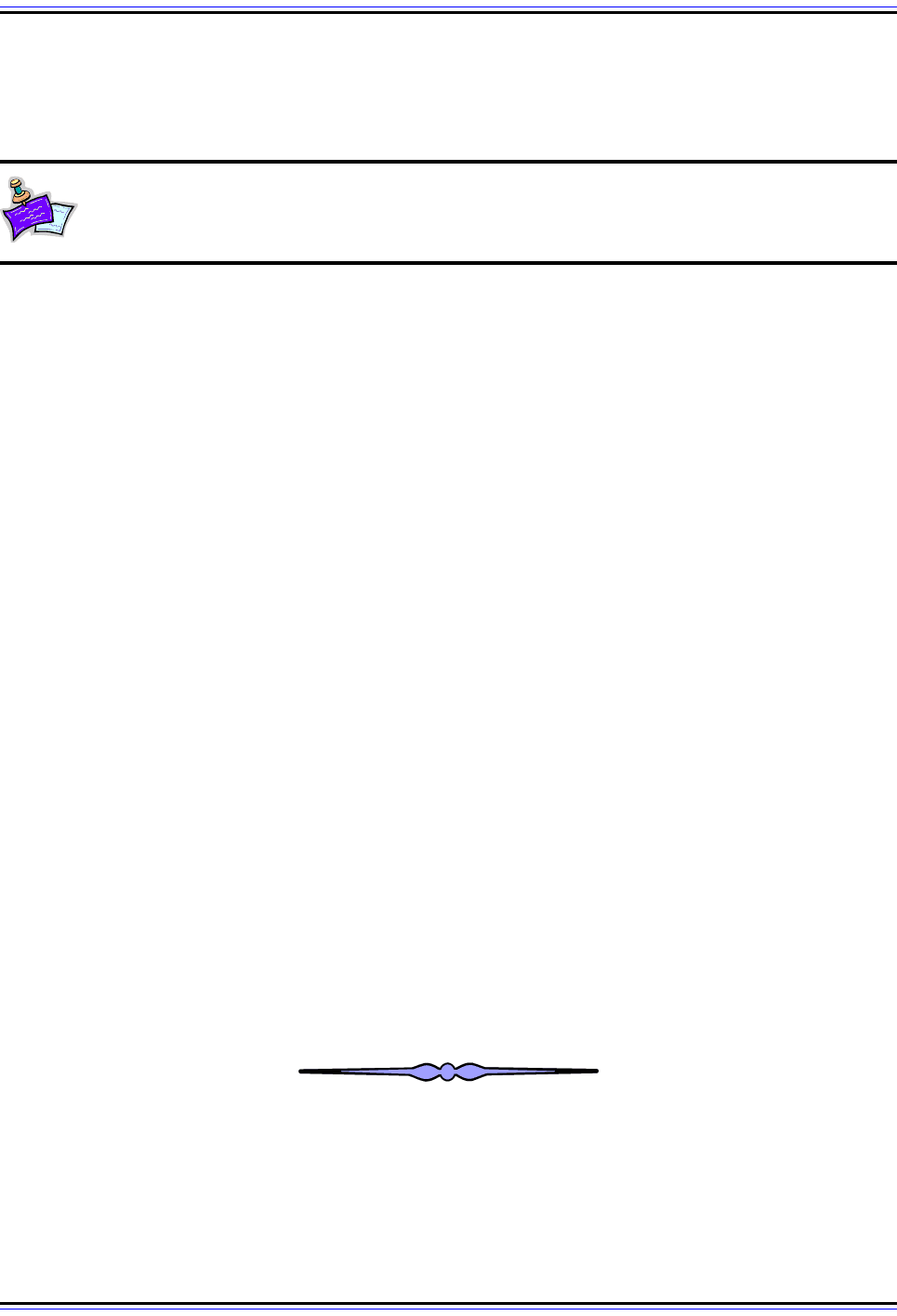
The TCP/IP Guide - Version 3.0 (Contents) ` 380 _ © 2001-2005 Charles M. Kozierok. All Rights Reserved.
subnets" to reflect their smaller size. In VLSM, the slash notation of classless addressing is
commonly used instead of binary subnet masks—VLSM is very much like CIDR in how it
works—so that's what I will use.
Note: Before proceeding to the VLSM example that follows, a suggestion: if you
aren't feeling comfortable with how basic subnetting works, you probably want to
read through the section on practical subnetting first. Trust me. ☺
Let's take our example above again and see how we can make everything fit using VLSM.
We start with our Class C network, 201.45.222.0/24. We then do three subnettings as
follows (see Figure 72 for an illustration of the process):
1. We first do an initial subnetting by using one bit for the subnet ID, leaving us 7 bits for
the host ID. This gives us two subnets: 201.45.222.0/25 and 201.45.222.128/25. Each
of these can have a maximum of 126 hosts. We set aside the first of these for subnet
S6 and its 100 hosts.
2. We take the second subnet, 201.45.222.128/25, and subnet it further into two sub-
subnets. We do this by taking one bit from the 7 bits left in the host ID. This gives us
the sub-subnets 201.45.222.128/26 and 201.45.222.192/26, each of which can have
62 hosts. We set aside the first of these for subnet S5 and its 50 hosts.
3. We take the second sub-subnet, 201.45.222.192/26, and subnet it further into four
sub-sub-subnets. We take 2 bits from the 6 that are left in the host ID. This gives us
four sub-sub-subnets that each can have a maximum of 14 hosts. These are used for
S1, S2, S3 and S4.
Okay, I did get to pick the numbers in this example so that they work out just perfectly, but
you get the picture. VLSM greatly improves both the flexibility and the efficiency of
subnetting. In order to use it, routers that support VLSM-capable routing protocols must be
employed. VLSM also requires more care in how routing tables are constructed to ensure
that there is no ambiguity in how to interpret an address in the network.
As I said before, VLSM is similar in concept to the way classless addressing and routing
(CIDR) is performed. The difference between VLSM and CIDR is primarily one of focus.
VLSM deals with subnets of a single network in a private organization. CIDR takes the
concept we just saw in VLSM to the Internet as a whole, by changing how organizational
networks are allocated by replacing the single-level “classful” hierarchy with a multiple-layer
hierarchy.
